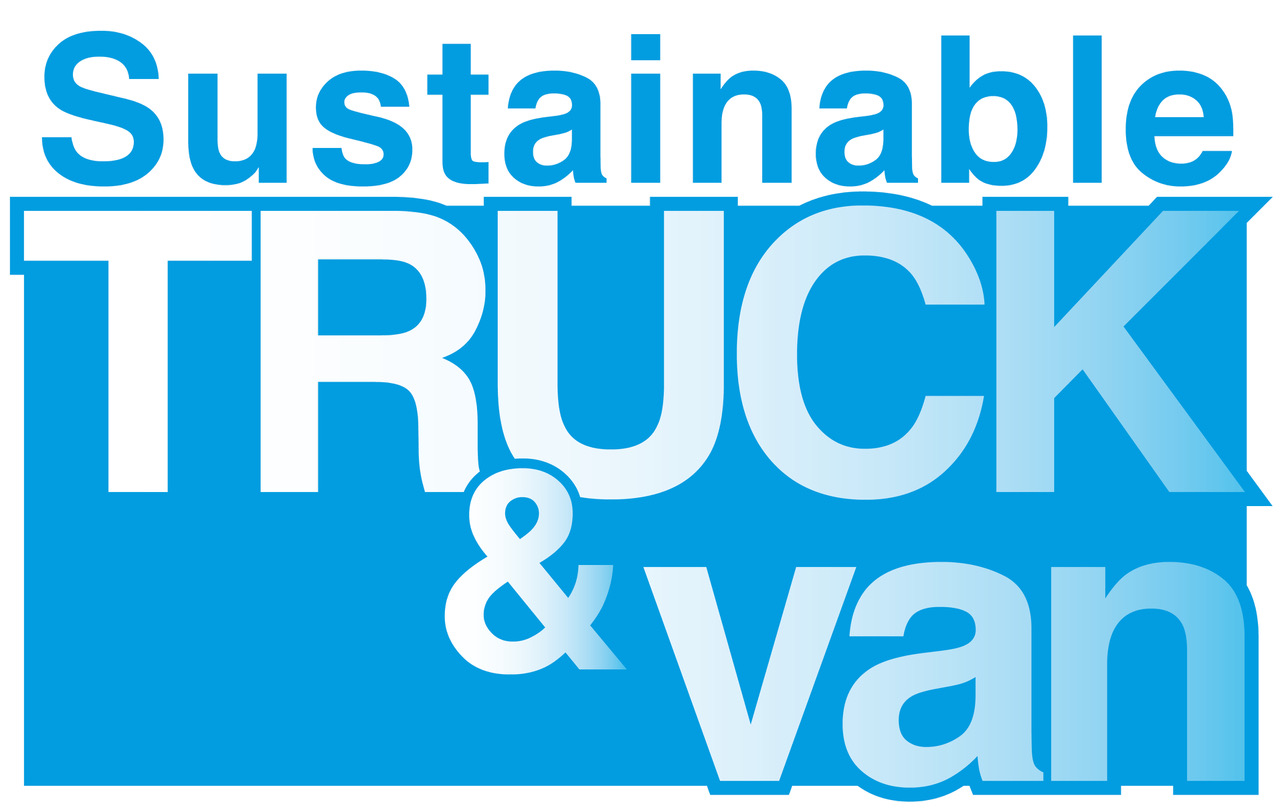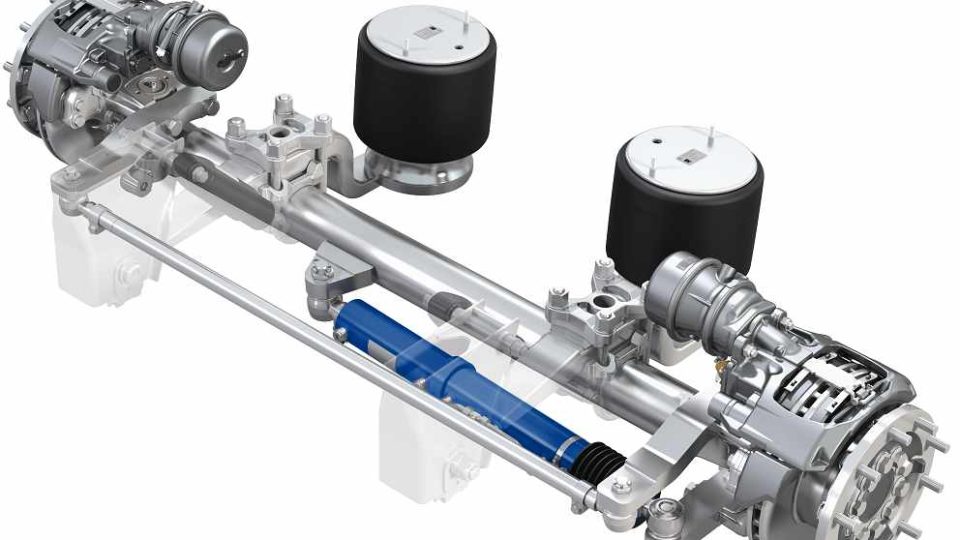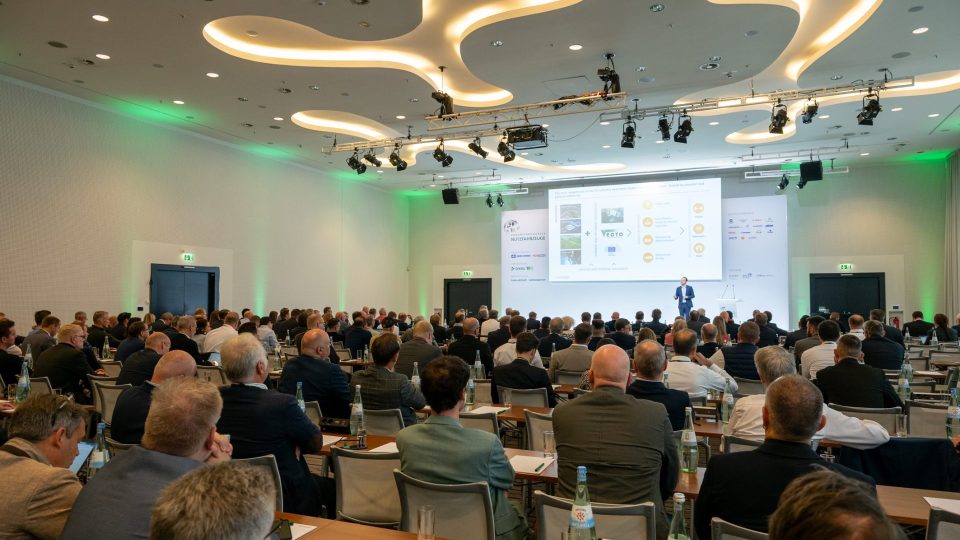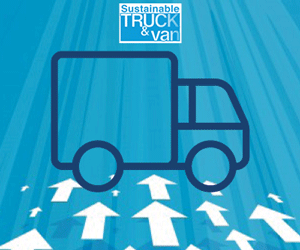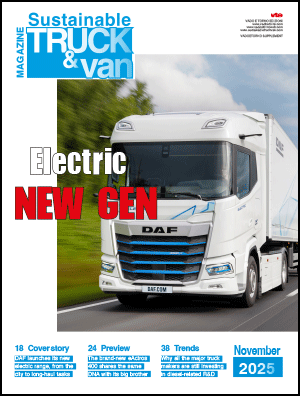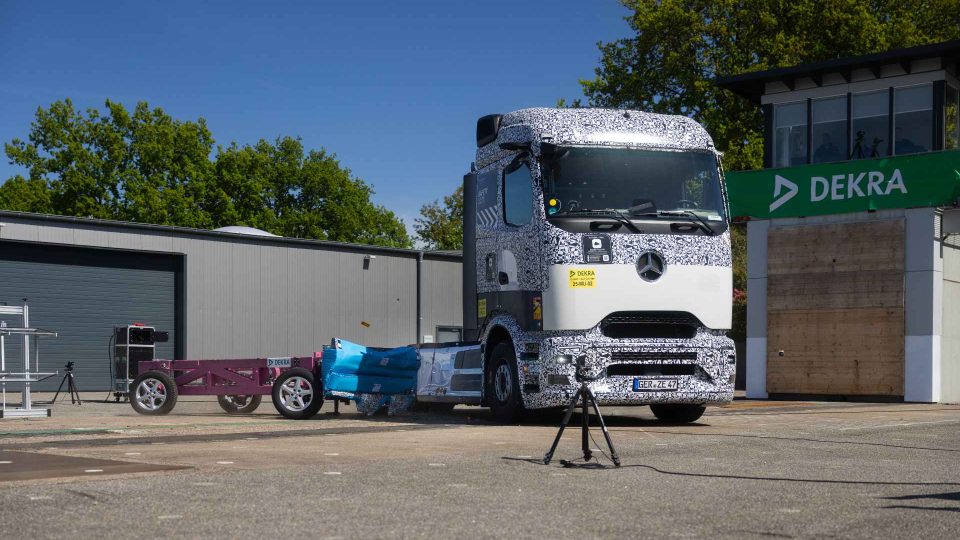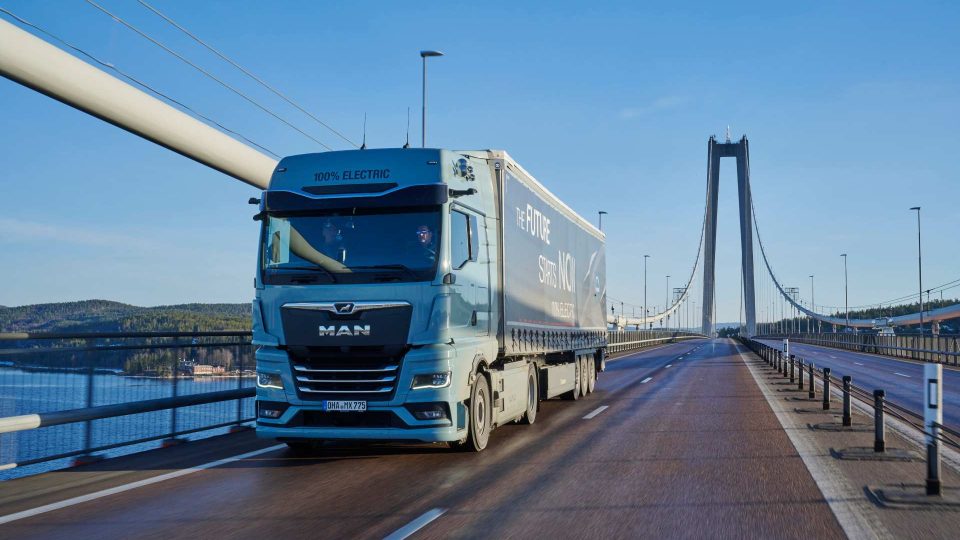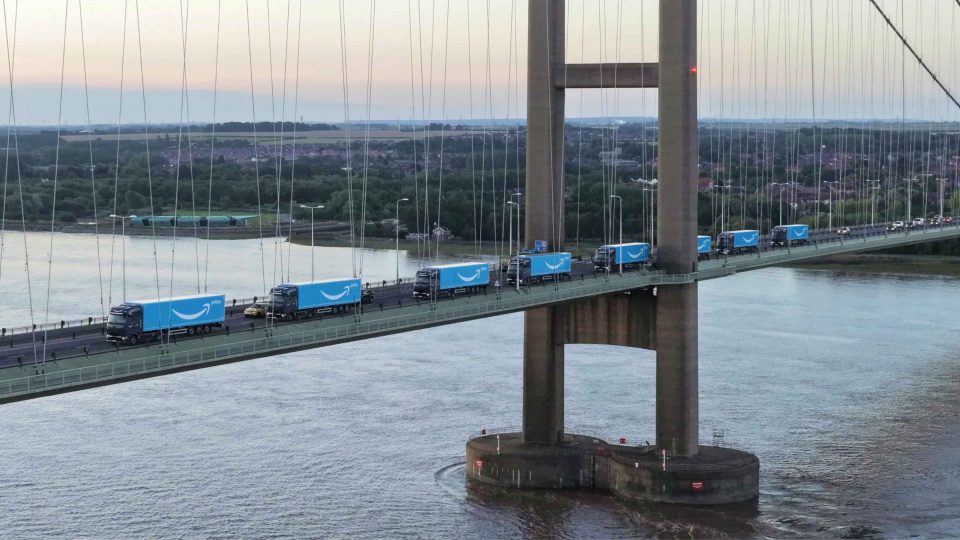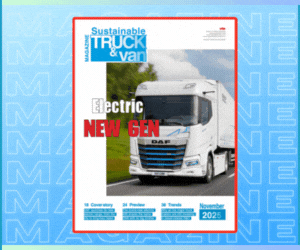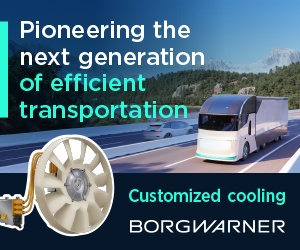Mercedes eEconic, 18 electric trucks to be delivered in Karlsruhe for waste collection
Since the end of September, seven fully electric waste collection vehicles have been in use throughout the Karlsruhe city area, with no area-specific restrictions. By 2035, the municipal fleet is to be completely converted to alternative drive systems, with the exception of a reserve for emergencies.
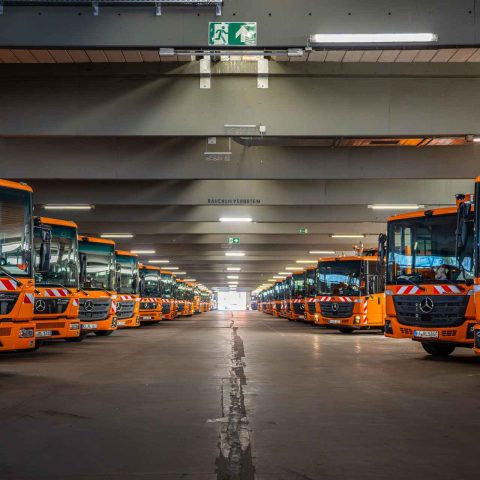
The so-called “Team Sauberes Karlsruhe” (TSK) recently added seven new Mercedes-Benz eEconic electric waste collection vehicles to its fleet for low-noise and low-emission waste disposal. A follow-up order for eleven more identical vehicles has already been placed with the manufacturer. With these battery-electric vehicles, Karlsruhe is setting an example for sustainability in waste management.
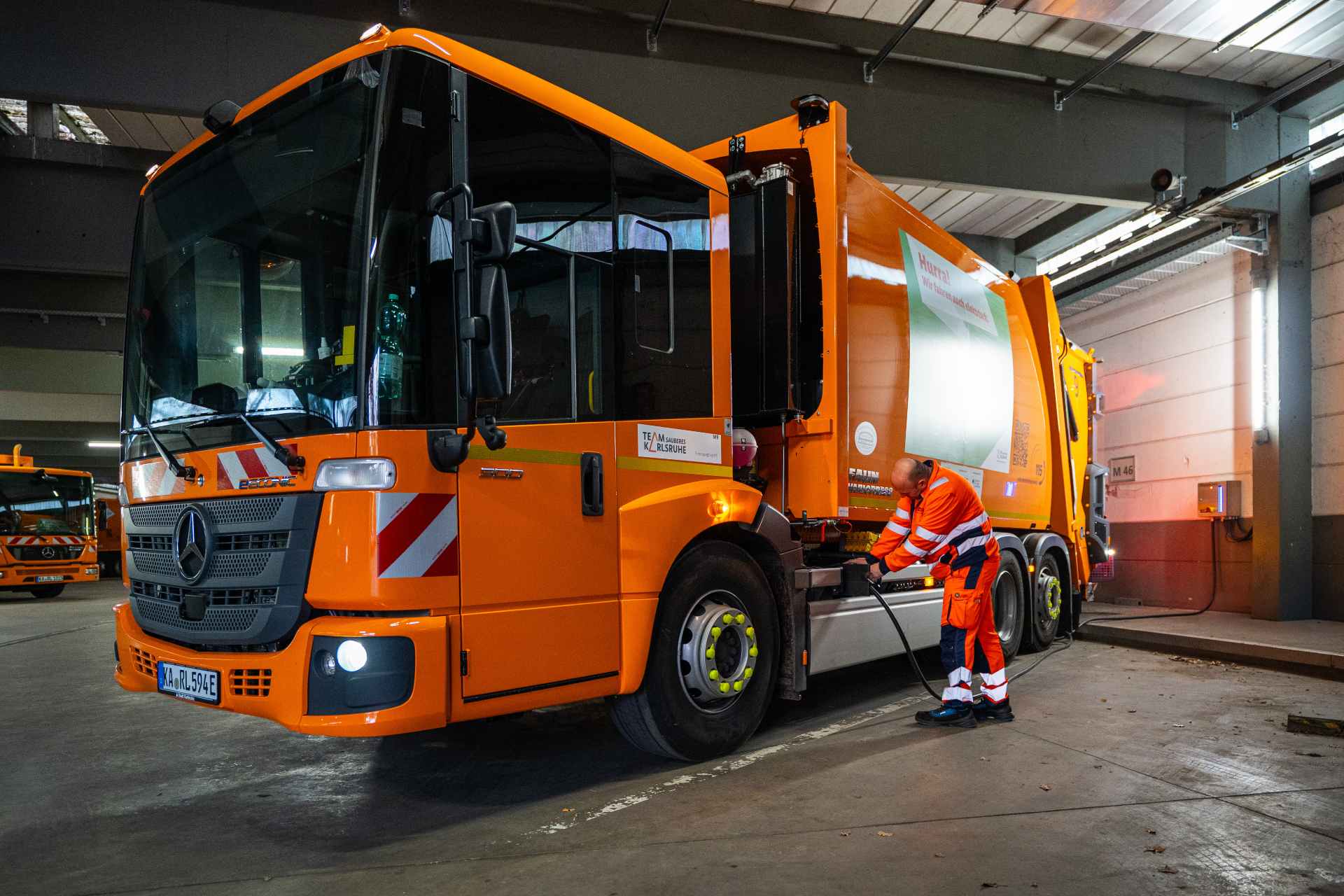
Since the end of September, the seven fully electric waste collection vehicles have been in use throughout the Karlsruhe city area, with no area-specific restrictions. The rear-loading vehicles are equipped with superstructures from FAUN Umwelttechnik GmbH & Co. KG to ensure an efficient and modern disposal process. Five of the eEconics have a VARIOPRESS 524 HK body with FAUN X tipping and can therefore be used flexibly for recyclables and waste materials.
Seven Mercedes eEconic already in use in Karlsruhe, Germany
TSK received its first fully electric waste collection vehicle in September and subjected it to consumption measurements over a period of one week. By 2035, the municipal fleet is to be completely converted to alternative drive systems, with the exception of a reserve for emergencies.

The appropriate charging infrastructure has been set up at the depot to ensure the reliable operation of the eEconic. This is a decentralized “satellite charging system” with two power units, each with a capacity of 400 kW, which supply a total of eight wall-mounted charging points, each with a capacity of 100 kW. Separate power units convert alternating current into direct current and provide the direct voltage required for the vehicle batteries. The direct current power generated is then transmitted to the charging boxes in the vehicle hall. An energy management system is integrated to ensure efficient use of the available charging power.
